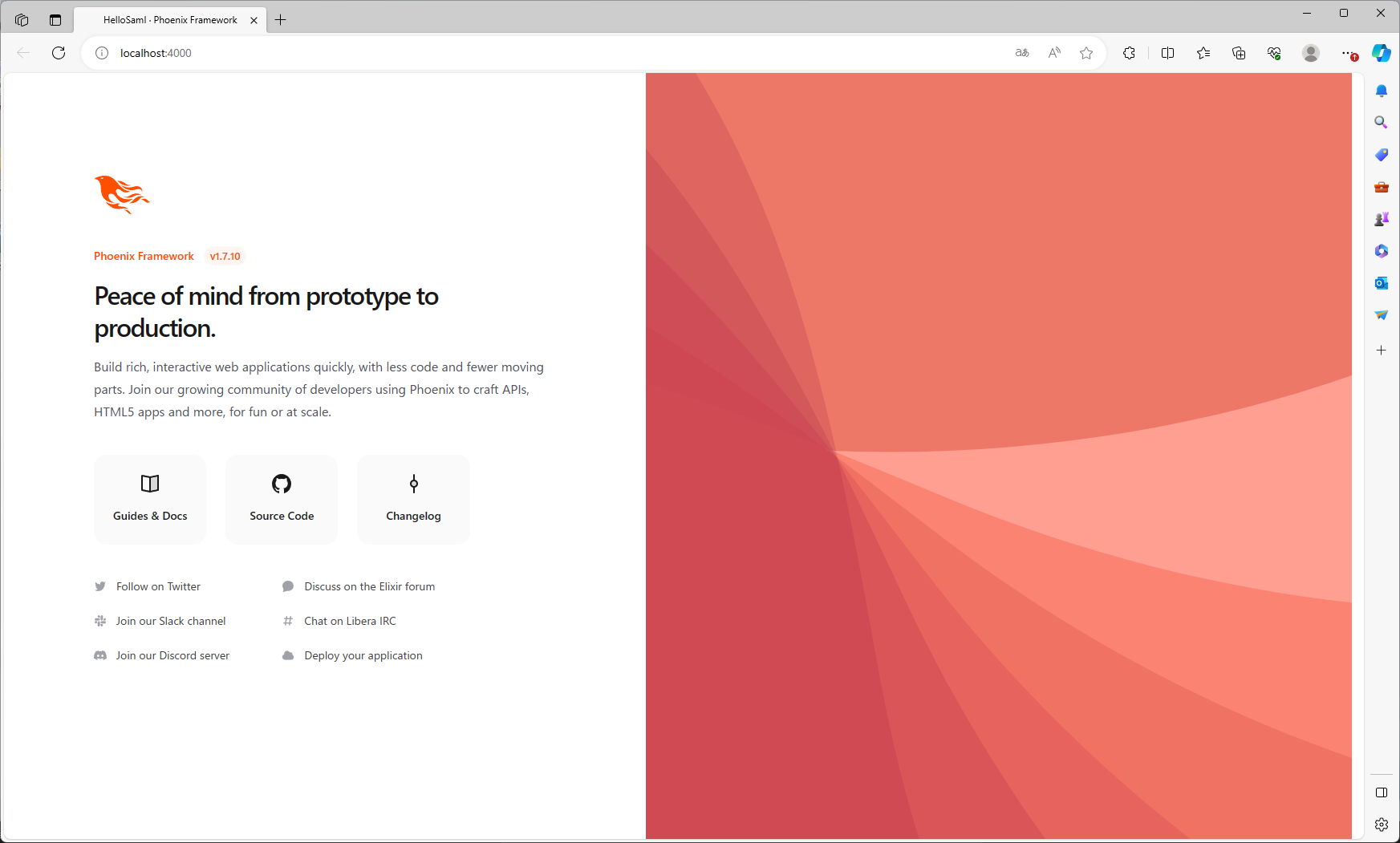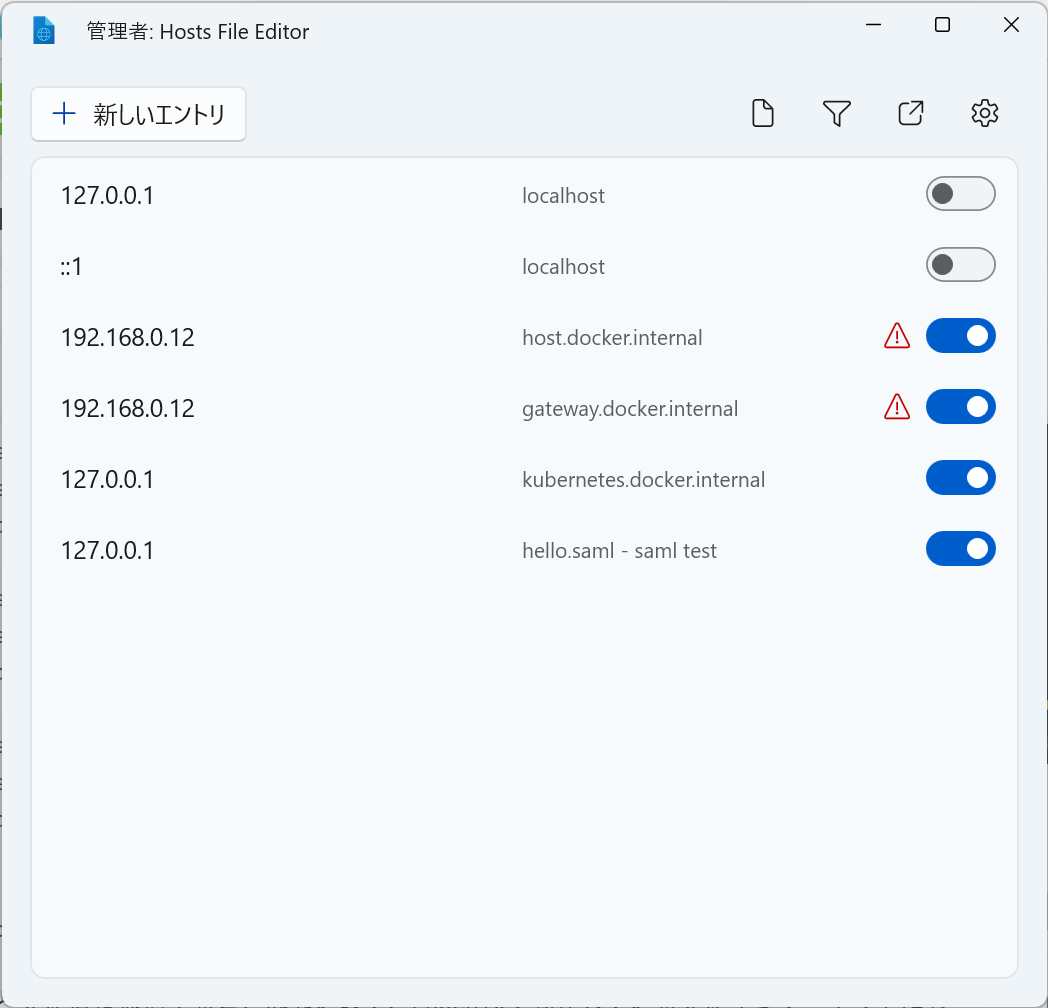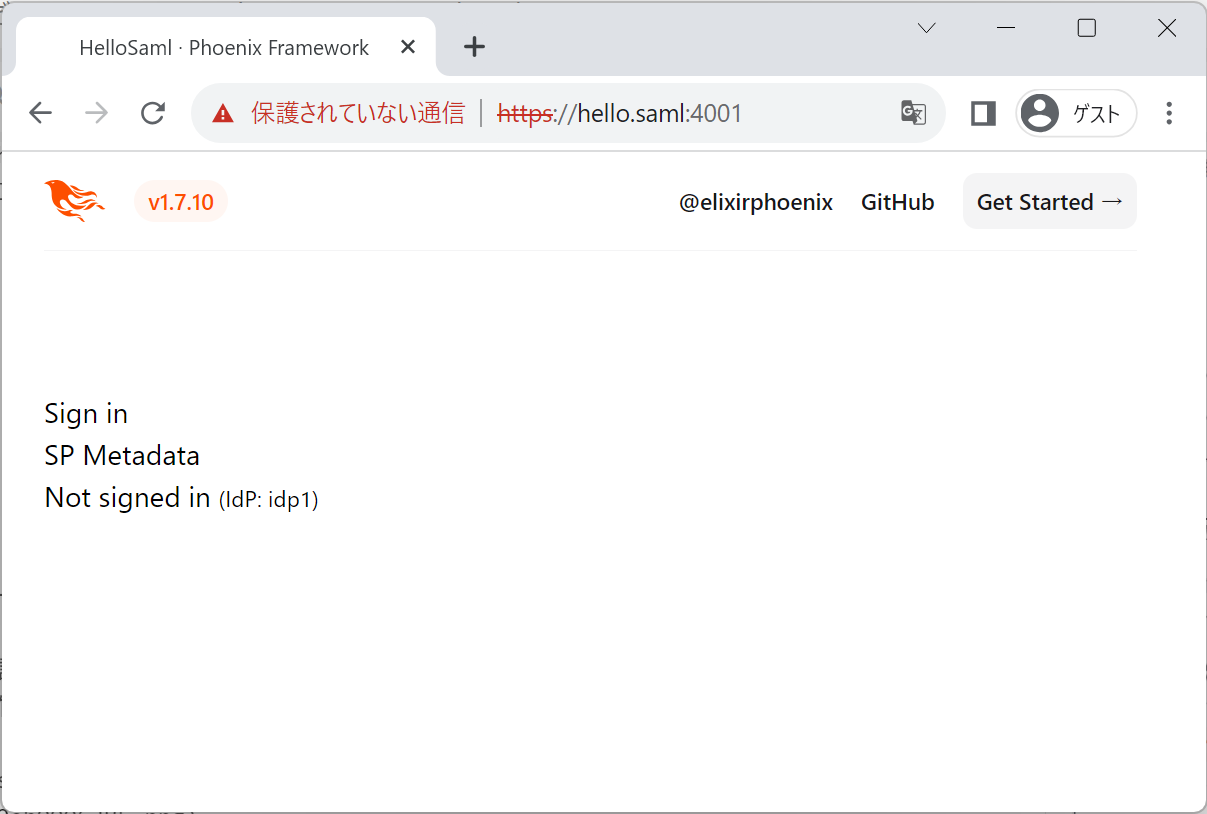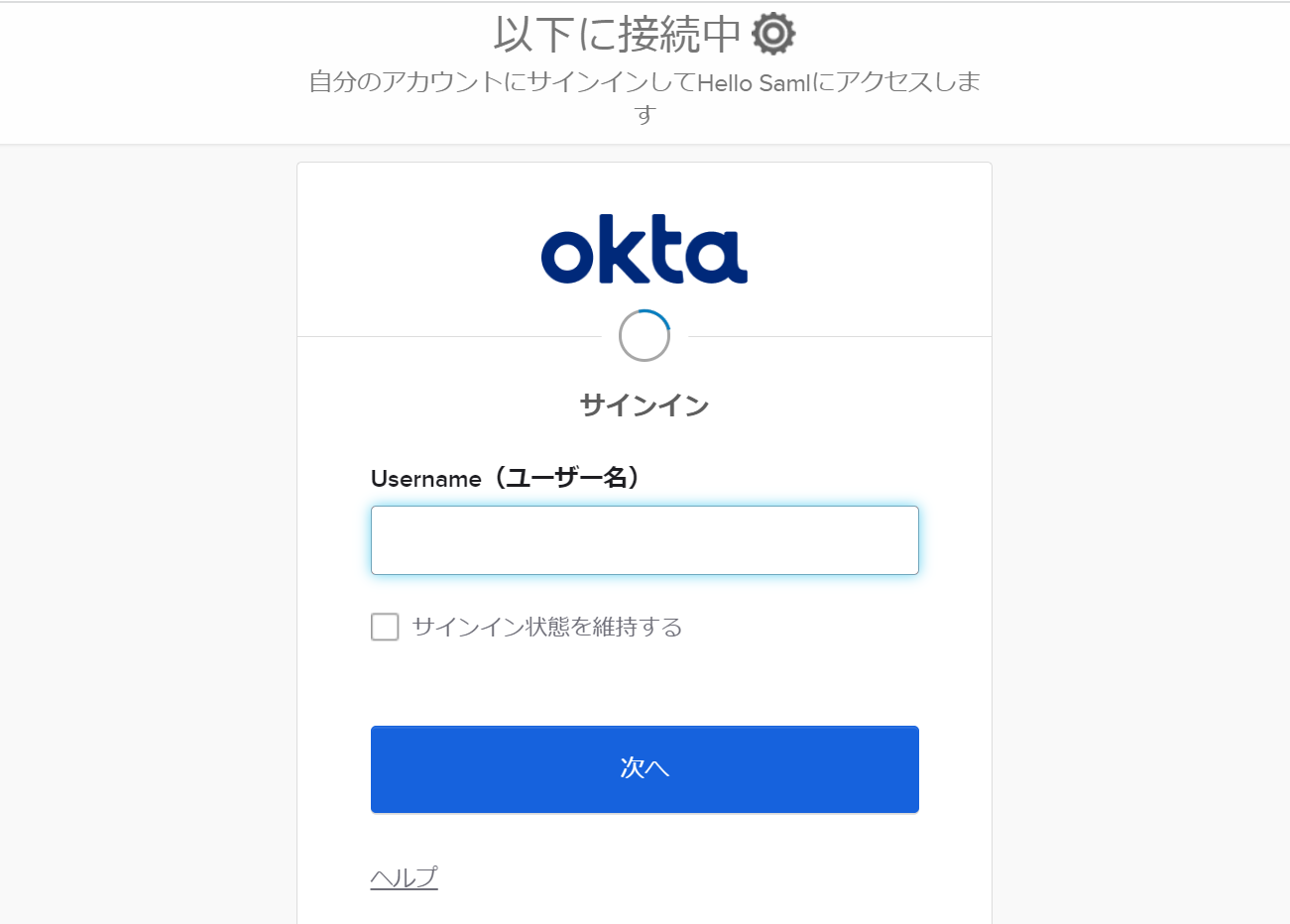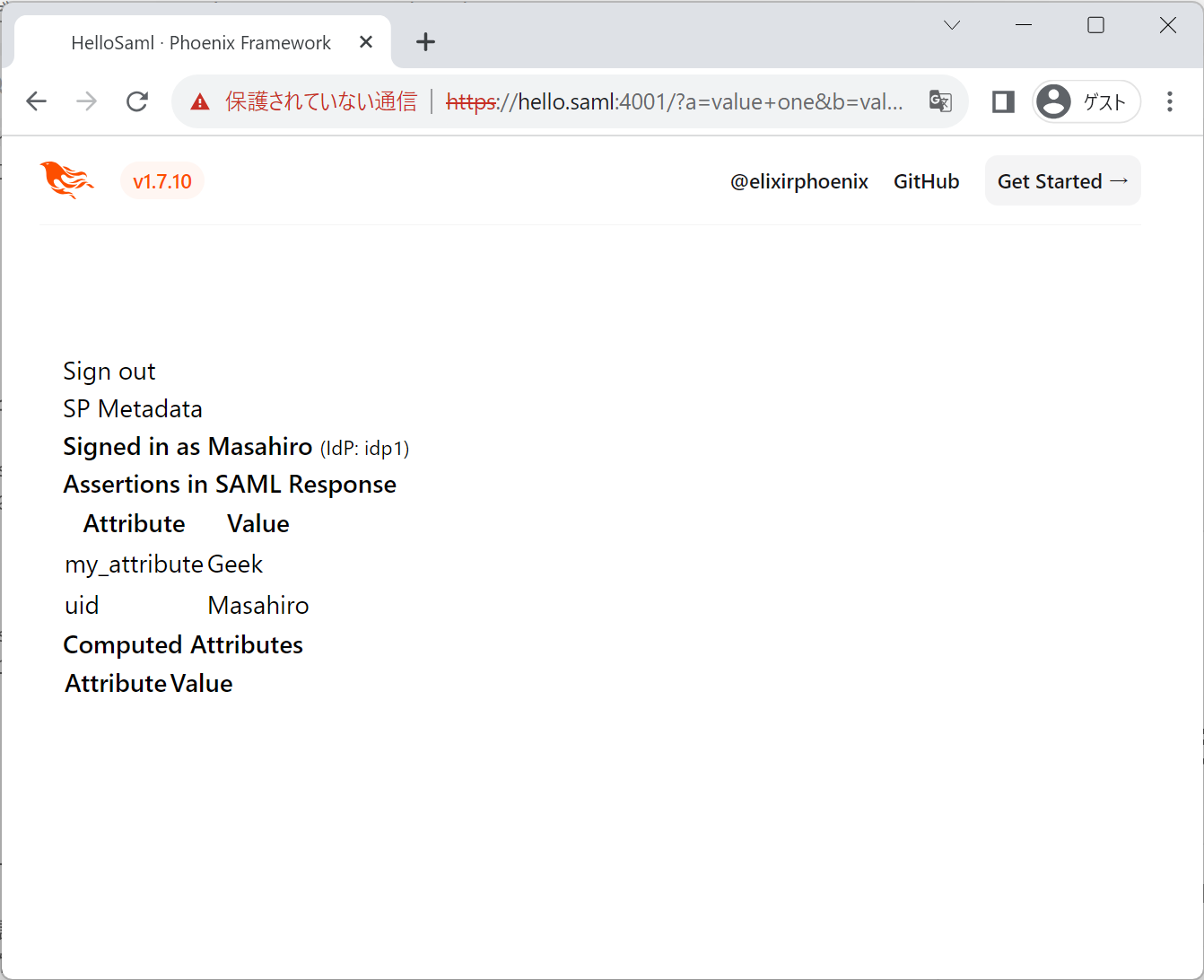はじめに
Pythonを使ってSAML認証の検証を行機会があり、Pythonで動かせたので、SAMLの勉強がてら、Elixirでも試してみることにしました。
samlyを試してみます
簡単にできるかと思ったんですが、認証エラーの原因が特定に結構苦労しました。
最終的には動作させる事ができたので、ハマりポイントも含めて、結果を紹介します。
Phoenix初期状態
$ mix phx.new hello_saml --database sqlite3
$ cd hello_saml
$ mix ecto.create
$ mix phx.server
動作することを確認しておきます。sqlite3にしてるのは、私の好みです。DBはなくても問題ないとおもいます。
Samlyの組み込み
ドキュメントのReadmeに従って組み込みます。
{:samly, "~> 1.3.0"},
def start(_type, _args) do
children = [
# ...
{Samly.Provider, []},
]
scope "/sso" do
forward "/", Samly.Router
end
same_site:の記述をコメントアウトしないとcookieによるセッションの保存が行われずうまくいきませんでした。はまりポイントの一つでした。
samlyのソースにIO.inspect仕込んでセッションの情報が無いことがわかって、解決したんですが、cookieの設定だったとは。
@session_options [
store: :cookie,
key: "_hello_saml_key",
signing_salt: "6MKq1HMr"
# same_site: "Lax"
]
証明書の作成
IDpとの通信で使用する証明書作成
$ mix phx.gen.cert --output priv/cert/samly_sp sp.samly
ブラウザーとの通信で使用する証明書作成
$ mix phx.gen.cert --output priv/cert/hello_saml hello.saml
Httpsのエンドポイント作成
config :hello_saml, HelloSamlWeb.Endpoint,
http: [port: 4000],
https: [
port: 4001,
cipher_suite: :strong,
certfile: "priv/cert/hello_saml.pem",
keyfile: "priv/cert/hello_saml_key.pem"
]
Samlyのconfigを追加
最低限の設定をしてみました。
base_urlは、設定しないと、IdPで認証が成功し、リダイレクトで戻ってくる段階でエラーが発生します。base_urlの問題とわかるようなエラーメッセージではなかったので、ハマりました。
config :samly, Samly.State,
store: Samly.State.Session,
opts: [key: :my_assertion_key]
config :samly, Samly.Provider,
idp_id_from: :path_segment,
service_providers: [
%{
id: "sp1",
entity_id: "urn:samly.howto:helo_saml",
certfile: "priv/cert/samly_sp.pem",
keyfile: "priv/cert/samly_sp_key.pem",
}
],
identity_providers: [
%{
id: "idp1",
sp_id: "sp1",
base_url: "https://hello.saml:4001/sso",
metadata_file: "metadata.xml",
}
]
ログイン画面を作成
samly_howtoのログイン画面を使いました。Phoenix 1.7だと、heexの記述がエラーになる部分があったので直してます。
<section class="row">
<div class="column">
<%= if @uid do %>
<a class="button" style="width: 100%;"
href={URI.encode(@signout_uri)}>Sign out</a>
<% else %>
<a class="button" style="width: 100%;"
href={URI.encode(@signin_uri)}>Sign in</a>
<% end %>
</div>
<div class="column">
<a class="button button-outline" style="width: 100%;"
href={URI.encode(@metadata_uri)}>SP Metadata</a>
</div>
</section>
<section class="row">
<div class="column">
<div class="signin-status">
<%= if @uid do %>
<strong>Signed in as <%= Plug.HTML.html_escape(@uid) %></strong>
<% else %>
Not signed in
<% end %>
<%= if @idp_id do %>
<small>(IdP: <%= Plug.HTML.html_escape(@idp_id) %>)</small>
<% end %>
</div>
</div>
</section>
<%= if @attributes do %>
<strong>Assertions in SAML Response</strong>
<table class="table attribute-table">
<thead>
<tr><th>Attribute</th><th>Value</th></tr>
</thead>
<tbody>
<%= for {k, v} <- @attributes do %>
<tr>
<td><%= Plug.HTML.html_escape(k) %></td>
<td><%= Plug.HTML.html_escape([v] |> List.flatten() |> Enum.join(", ")) %></td>
</tr>
<% end %>
</tbody>
</table>
<% end %>
<%= if @computed do %>
<strong>Computed Attributes</strong>
<table class="table attribute-table">
<thead>
<tr><th>Attribute</th><th>Value</th></tr>
</thead>
<tbody>
<%= for {k, v} <- @computed do %>
<tr>
<td><%= Plug.HTML.html_escape(k) %></td>
<td><%= Plug.HTML.html_escape([v] |> List.flatten() |> Enum.join(", ")) %></td>
</tr>
<% end %>
</tbody>
</table>
<% end %>
ログイン画面のコントローラです。
ところどころにIO.inspect入れてます。
defmodule HelloSamlWeb.PageController do
use HelloSamlWeb, :controller
alias Samly.Assertion
def home(conn, params) do
assertion = Samly.get_active_assertion(conn)
IO.inspect(assertion, label: "assertion")
opts = Application.get_env(:samly, Samly.Provider, [])
idp_in_uri_type = Keyword.get(opts, :idp_id_from, :path_segment)
IO.inspect(opts, label: "opts")
idp_id =
case {idp_in_uri_type, get_assertion_idp_id(assertion)} do
{_, idp_id} when idp_id != nil -> idp_id
{:path_segment, _} -> Map.get(params, "idp", "idp1")
_ -> nil
end
IO.inspect(idp_id, label: "idp_id")
demo_target_qp = %{a: "value one", b: "value two"}
demo_target_qp =
case idp_in_uri_type do
:path_segment -> Map.put(demo_target_qp, :idp_id, idp_id)
:subdomain -> demo_target_qp
end
demo_target_uri = URI.to_string(%URI{path: "/", query: URI.encode_query(demo_target_qp)})
IO.inspect(demo_target_uri, label: "target_url")
signin_uri_with_target =
URI.to_string(%URI{
path: get_signin_uri(idp_id, idp_in_uri_type),
query: URI.encode_query(%{target_url: demo_target_uri})
})
signout_uri_with_target =
URI.to_string(%URI{
path: get_signout_uri(idp_id, idp_in_uri_type),
query: URI.encode_query(%{target_url: demo_target_uri})
})
assigns = %{
idp_id: idp_id,
uid: Samly.get_attribute(assertion, "uid"),
attributes: get_assertion_attributes(assertion),
computed: get_assertion_computed_attributes(assertion),
metadata_uri: get_metadata_uri(idp_id, idp_in_uri_type),
signin_uri: signin_uri_with_target,
signout_uri: signout_uri_with_target
}
render(conn, :home, assigns)
end
defp get_assertion_idp_id(%Assertion{idp_id: idp_id}), do: idp_id
defp get_assertion_idp_id(nil), do: nil
defp get_assertion_attributes(%Assertion{attributes: attributes}), do: attributes
defp get_assertion_attributes(nil), do: nil
defp get_assertion_computed_attributes(%Assertion{computed: computed}), do: computed
defp get_assertion_computed_attributes(nil), do: nil
defp get_metadata_uri(_idp_id, :subdomain), do: "/sso/sp/metadata"
defp get_metadata_uri(idp_id, :path_segment), do: "/sso/sp/metadata/#{idp_id}"
defp get_signin_uri(_idp_id, :subdomain), do: "/sso/auth/signin"
defp get_signin_uri(idp_id, :path_segment), do: "/sso/auth/signin/#{idp_id}"
defp get_signout_uri(_idp_id, :subdomain), do: "/sso/auth/signout"
defp get_signout_uri(idp_id, :path_segment), do: "/sso/auth/signout/#{idp_id}"
end
hostsファイルの変更
IdPとSPが直接通信することはないので、SPはインターネットに公開されている必要もありません。
名前でアクセスできる必要もたぶんなくて、localhostのままでも大丈夫だとおもいますが、samlyのサンプルでhostsファイルで127.0.0.1に名前を付けて、名前で参照する方法がとられていたので真似してみます。
Windowsを使っているので、PowerToysのホストファイルエディターを使って hello.saml を登録しました。
これでhttps://hello.saml:4001/でブラウザーで開けるようになります。
連携するIdPの用意
samly hotwoでは、ローカルでIdPを動作させる方法が紹介されています。
これでもよいと思いますが、IdPの無料トライアルで試してみました。
GMO Trust
okta
結論から書くと、GMO TrustはSamlyで試したところ、エラーとなりうまくいきませんでした。なにか私の設定問題かもしれませんが、解決できててません。
samlyのドキュメントで動作確認されているoktaでは、動作しました。
oktaの設定
GMO TrustでIdP+Python-samlで設定した経験があったので、oktaの設定できましたが、慣れないと難しいと思いました。
設定の詳細は省略しますが、スクリーンショットの様に設定すれば連携できると思います。
Single Sign On URLが、IdPで認証を行った後に、SPに制御が戻ってくるURLになります。
https://hello.saml:4001/sso/sp/consume/[idpのID]を指定して、認証結果をsamlyが受け取るようにします。
このURLは、samlyのドキュメントのSAML Assertion Consumer ServiceのURLに説明があります。
okta のアプリケーション設定
oktaの管理画面で、metadataのxmlファイルをダウンロードして、metadate.xmlとして保存します。
configのidentity_providersのmetadata_fileにこのファイルが指定してあるので、idp1として利用できるようになります。
identity_providers: [
%{
id: "idp1",
sp_id: "sp1",
base_url: "https://hello.saml:4001/sso",
metadata_file: "metadata.xml",
}
]
動作確認
トップページを開くと作成したページが表示されます。
Sign in をクリックするとIdPの認証画面が表示されるのでログインします。
ログイン後、Signed in asの後にログインしたユーザのuidが表示されています。
uid以外のAttributeもokta側で設定しているものが取得できている事がわかります。
【余談】ブラウザーとの通信をhttpsにする必要があるか?
httpのサイトでSAML認証を行うと、iDpで認証後acsに戻ってくるときに、送信してよいかを尋ねるダイアログが表示されます。動作を確認するだけなら、httpのサイトでも大丈夫でした。
みかけた不具合
- Sign outのボタンを押すと、esaml内でエラーが発生します
- GMO Trustでは動作しませんでした
- samlyのgithubのissueも確認したほうがいいかも
まとめ
- サンプルのsamly-howtoはバージョンが古くPhonix1.7ではエラーになる部分があるので注意。基本的な部分に違いはない
- ドキュメントもしっかり書かれていて、使い方も理解できれば、分かりやすい。
- 実際のIdP(okta)で動作させてみて、トライandエラーの末、認証できた。
- 認証できなかったIdPもあり、いろいろ試してみる必要がありそう。
- 最近メンテナンスされていないのが課題
